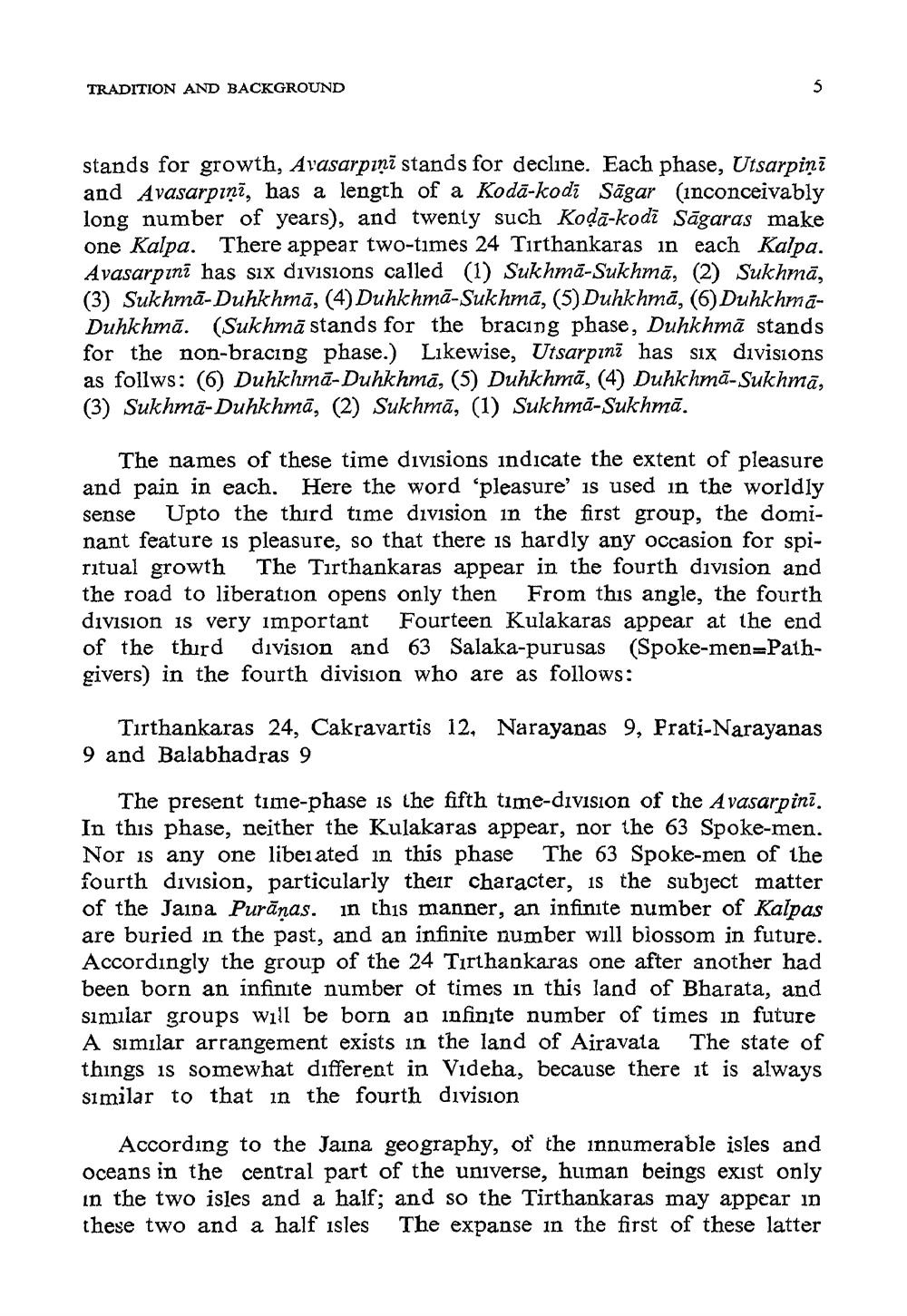________________
TRADITION AND BACKGROUND
stands for growth, Avasarpınī stands for decline. Each phase, Utsarpini and Avasarpiņā, has a length of a Kodā-kodī Sāgar (inconceivably long number of years), and twenty such Kodā-kodī Sāgaras make one Kalpa. There appear two-times 24 Tirthankaras in each Kalpa. Avasarpini has six divisions called (1) Sukhma-Sukhmā, (2) Sukhmā, (3) Sukhma-Duhkhmā, (4) Duhkhmā-Sukhmā, (5) Duhkhmā, (6) DuhkhmaDuhkhmā. (Sukhmā stands for the bracing phase, Duhkhmã stands for the non-bracing phase.) Likewise, Utsarpinā has six divisions as follws: (6) Duhkhmā-Duhkhmā, (5) Duhkhmā, (4) Duhkhmā-Sukhmā, (3) Sukhmā-Duhkhmā, (2) Sukhmā, (1) Sukhma-Sukhmā.
The names of these time divisions indicate the extent of pleasure and pain in each. Here the word 'pleasure' is used in the worldly sense Upto the third time division in the first group, the dominant feature is pleasure, so that there is hardly any occasion for spiritual growth The Tırthankaras appear in the fourth division and the road to liberation opens only then From this angle, the fourth division is very important Fourteen Kulakaras appear at the end of the third division and 63 Salaka-purusas (Spoke-men-Pathgivers) in the fourth division who are as follows:
Tırthankaras 24, Cakravartis 12, Narayanas 9, Prati-Narayanas 9 and Balabhadras 9
The present time-phase is the fifth time-division of the Avasarpini. In this phase, neither the Kulakaras appear, nor the 63 Spoke-men. Nor is any one libei ated in this phase The 63 Spoke-men of the fourth division, particularly their character, is the subject matter of the Jaina Purānas. in this manner, an infinite number of Kalpas are buried in the past, and an infinite number will blossom in future. Accordingly the group of the 24 Tirthankaras one after another had been born an infinite number of times in this land of Bharata, and similar groups will be born an infinite number of times in future A similar arrangement exists in the land of Airavata The state of things is somewhat different in Videha, because there it is always similar to that in the fourth division
According to the Jaina geography, of the innumerable isles and oceans in the central part of the universe, human beings exist only in the two isles and a half; and so the Tirthankaras may appear in these two and a half isles The expanse in the first of these latter




